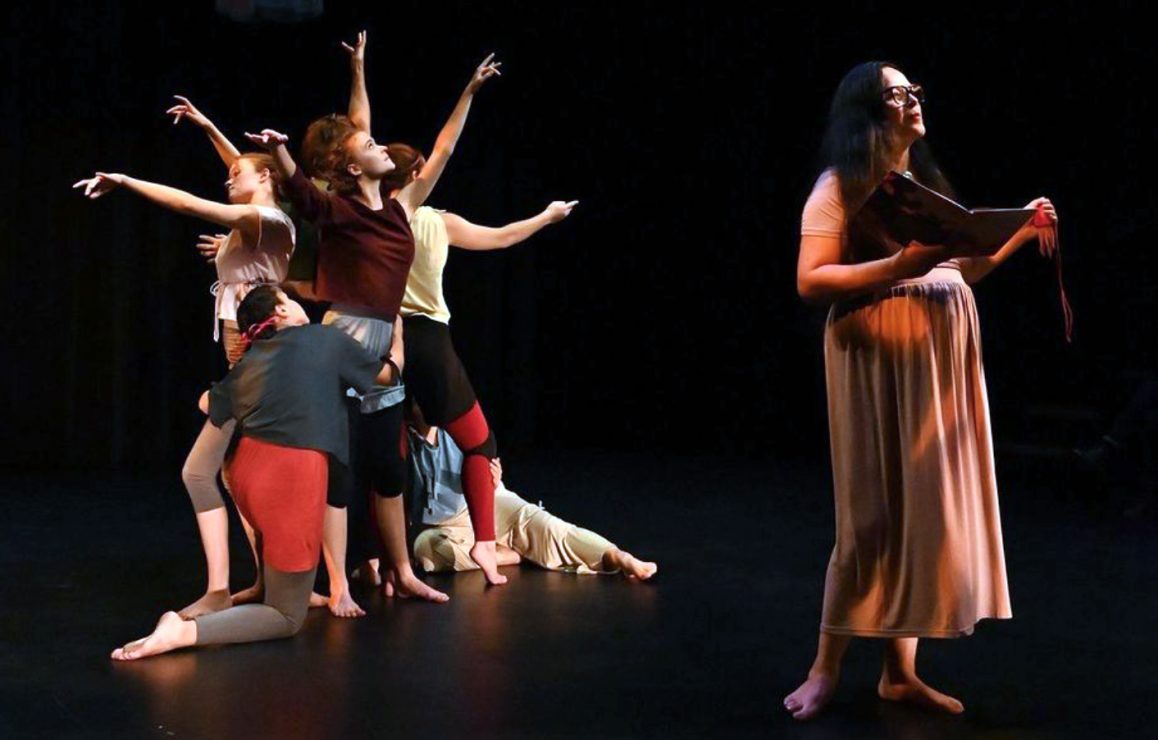Two memorable and evocative performances in this Staging Equality show

The Woman Who Outshone The Sun. Photo by Megan Farrell.
SETYA is the final show in UVic’s Staging Equality Theatre for Young Audiences series. The series began in 2019, spear-headed by Yasmine Kandil and Sasha Kovacs. This three-year project aimed to explore how theatre can address issues of race, diversity, and inclusion by building relationships based on trust and respect. Staging Equality was built on a foundation of consulting, questioning, listening, and planning alongside community and campus partners. Rather than working with out-of-town guests and professionals, Staging Equality focuses on collaborating with local Indigenous and racialized artists.
SETYA includes two shows: The Woman Who Outshone the Sun and Shi-shi-etko, both of them adapted from children’s books. Both performances are ensemble pieces that use interpretive dance in place of the original illustrations, as well as background music and interpolated animations on a hanging curtain. The shows are narrated by performers reading from the respective books.
It’s very difficult to write about interpretive dance. So much is based on experiencing the performance in the moment and how the performers interact with the music and narration. All of it is incredibly subjective.
Was the dancing good? I can’t say. Did it evoke the imagery of the text? I think I did.
The Woman Who Outshone the Sun and Shi-shi-etko are impactful stories because they are quiet in their approach. The Woman Who Outshone the Sun is a Mexican folktale about a mysterious woman who comes to a small village and is chased out by the villagers, who have to grapple with their actions when the river leaves with her. Shi-shi-etko follows a child’s last few days before she’s taken to a residential school. In turning these into dance pieces, the text of these stories is emphasized. The interpretive dance format forces the audience to listen carefully to the language of the story and pay close attention to the correlation between narration and the dances.
I believe this approach worked for The Woman Who Outshone the Sun and Shi-shi-etko because they are children’s stories. While evocative, they are simple, straightforward narratives — a story of forgiveness and a story of a child’s memories of her lost home.
Long time readers may remember my review of The Wasteland, another example of an interpretive dance adaptation. The Wasteland did not work for me. Not only did I need to read the poem it was based on, but I needed to deeply understand it in order to enjoy the show. As someone who went into The Wasteland blind, I did not understand the intent behind it and had to dig to grasp what the dancing was meant to represent. SETYA, however, was perfectly clear with no prior knowledge of the stories.
It helps that The Woman Who Outshone the Sun and Shi-shi-etko each have a performer who grounds the stories, Sarai Gomez and Krystal Cook respectively. They give the dancers someone to react to and to play off of. This also gives the audience a main character to follow within the ensemble.
All these decisions help to focus the storytelling on the original texts of The Woman Who Outshone the Sun and Shi-shi-etko. Placing the emotions of the text onto the dancers and giving them a central character to react to helped to not only make the performances memorable, but create a genuinely wonderful oral story.
SETYA is playing until Oct. 21. Tickets can be purchased at the Phoenix Theatre’s website.








